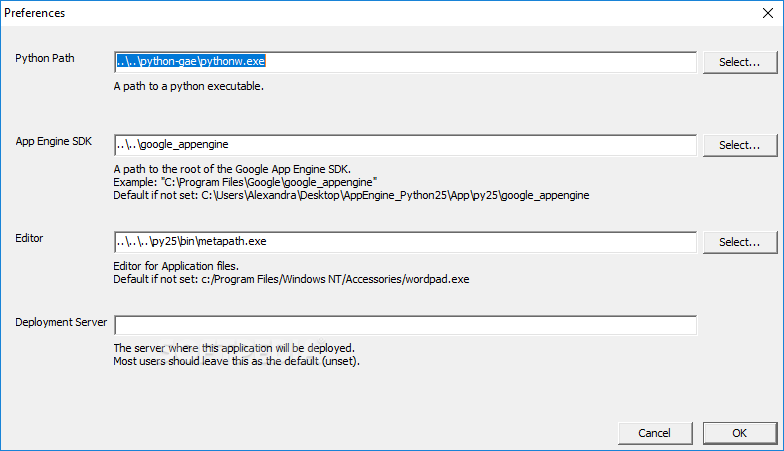

One way you can do it effectively is via Github Actions. We can basically use anything that allows gcloud SDK to be installed, so we can call gcloud app deploy. There are so many possibilities to set up continuous deployment for Google App Engine. Continuous deployment using Github Actions So we don’t have to manually deploy our app using the gcloud app deploy command. Let’s have a look if we can quickly set up a continuous deployment workflow. Pretty simple right? Besides setting up a Google Cloud Platform project, it was as simple as adding an app.yaml file to the project’s directory. If you have already done it before and would like to create a new project you can call: It will walk your through authenticating to your Google account and setting up a project. Generally is as simple as installing it and then running gcloud init in the terminal.
GOOGLE APP ENGINE SDK HOW TO
You can follow the Cloud SDK docs for detailed information on how to install and set up the SDK. To get started, make sure you have a Google account 😉.Īlso, you’ll need to install the gcloud SDK and create a project in the Google Cloud Platform.
GOOGLE APP ENGINE SDK FREE
Github Actions are free for public repositories and come with 2,000 Actions minutes a month for all your private repositories.Google App Engine comes with free 28 instance hours per day (instances scale to 0 when not used) and 1 GB of outgoing traffic per month.Both Google Cloud Platform and Github have free tiers: Costįree! You wouldn’t generally pay anything for hosting smaller projects on Google App Engine.
GOOGLE APP ENGINE SDK CODE
You can find all the code presented here as an example Node.js project on this Github repository. We’ll also set up a continuous deployment workflow using Github Actions to automate our Google App Engine deployment. In this post, I will show you step by step how to quickly deploy a Node.js application to Google App Engine. It comes with reasonable default settings, so you won’t need a lot of configuration to get started. You can get up and running pretty quickly by using standard Node.js runtime. Google App Engine (GAE) is a nice and simple way to deploy your project. Continuous deployment using Github Actions.Select the Enable Google App Engine checkbox and specify the path to the folder where the Google App Engine SDK for PHP is installed on your machine.How to deploy a Node.js app to Google App Engine using Github Actions Under the Languages and Frameworks node, click the Google App Engine page.


To make P圜harm recognize an existing Google App Engine project, follow these steps: Making P圜harm recognize an existing Google App Engine project Visit to view your application in action. In P圜harm, create a Google App Engine project. In your browser, sign in to your Google account. Run/debug configuration for App Engine server.Ĭreating, deploying, and launching applications on Google App Engine To create, deploy, and launch an application on Google App Engine, follow these general steps: Google App Engine support in P圜harm includes:Ī dedicated project type with specific directory structure and configuration file.Ībility to enable and configure Google App Engine support per project.Ībility to generate and view model dependency diagram for the Google App Engine models.Ībility to upload applications, using the command of the Tools menu. Google App Engine works with Python versions 2.5 and later. Google App Engine SDK is downloaded and installed on your computer. Prior to start working, consider the following prerequisites: P圜harm supports all major Google App Engine development practices.


 0 kommentar(er)
0 kommentar(er)
